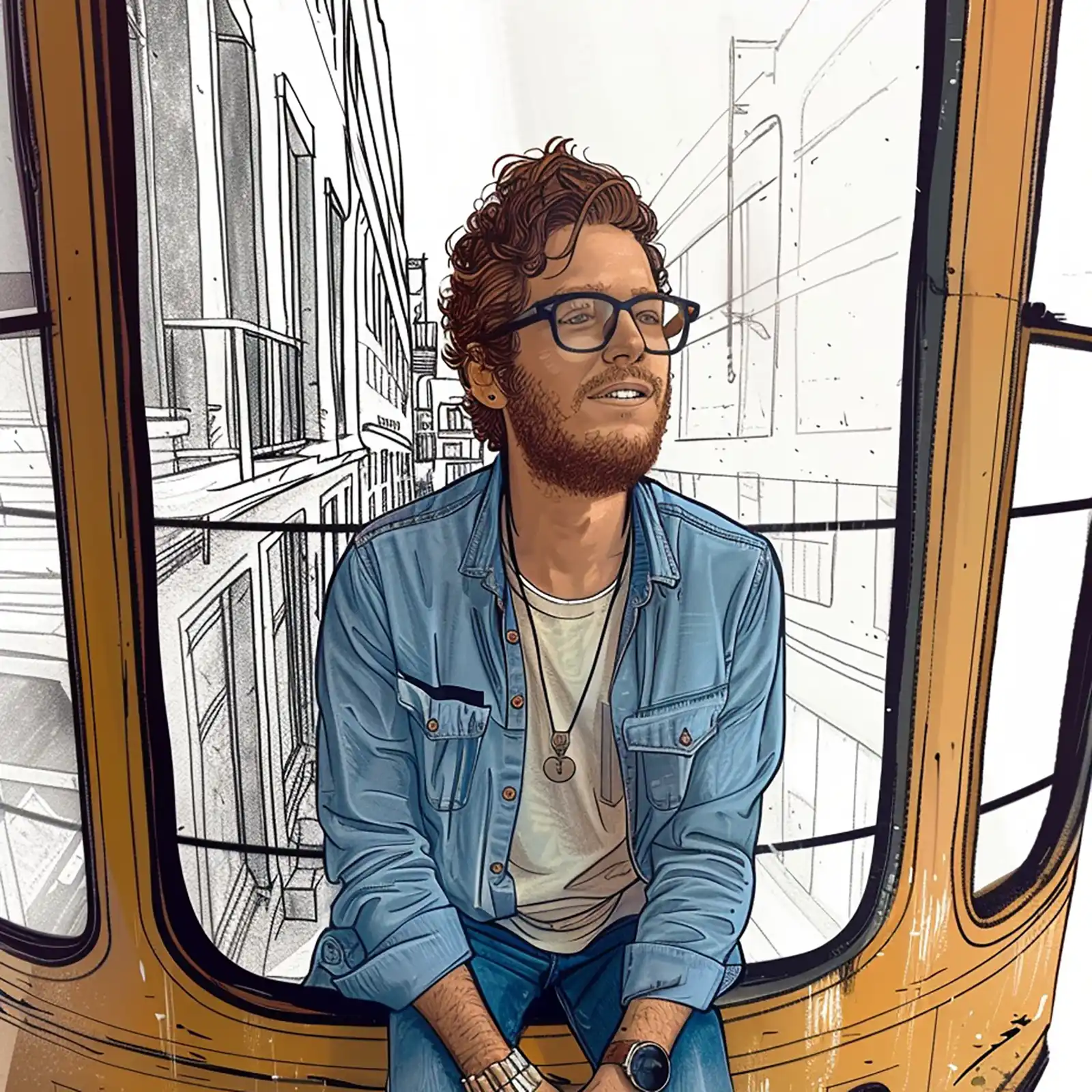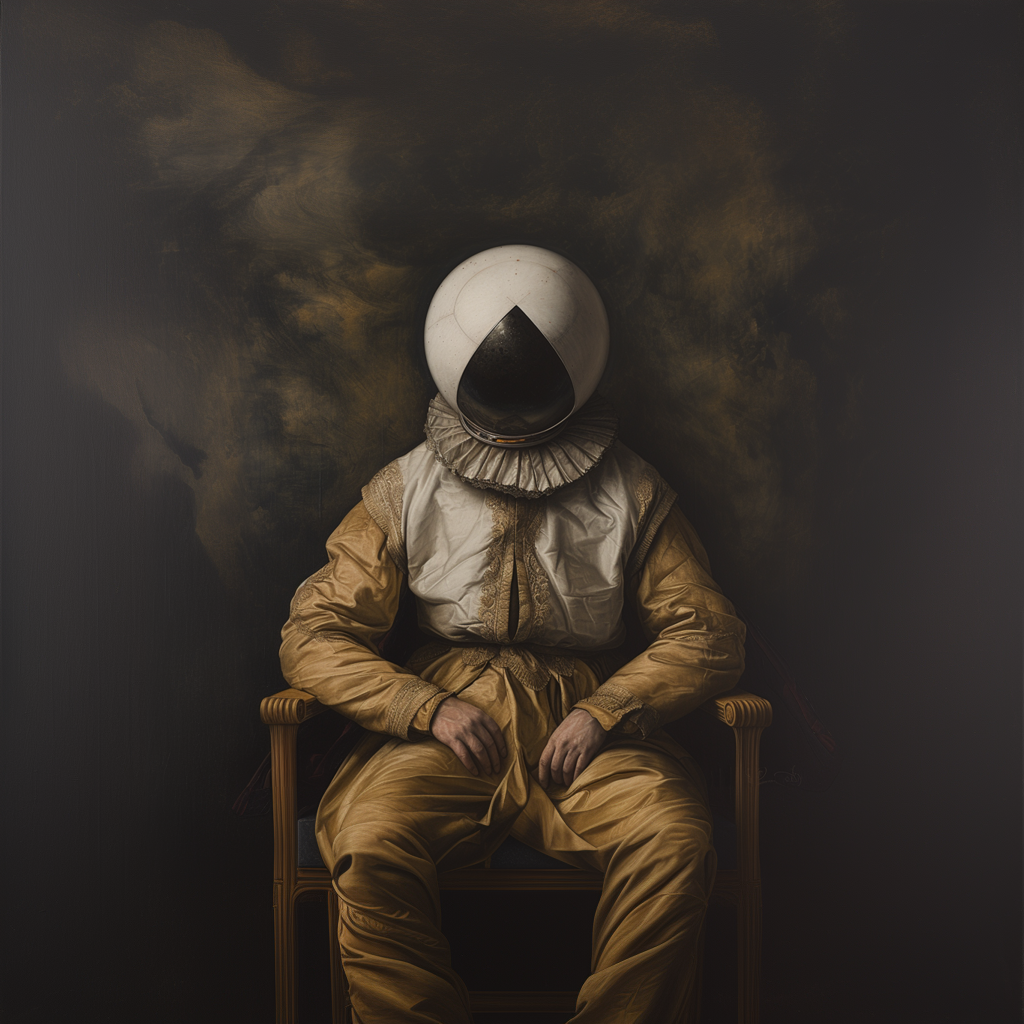
Mona Lisa
Die lebendige Seele der Mona Lisa
Starten wir einmal mit den Fakten: Leonardo da Vinci hat mit der „Mona Lisa“ ein Meisterwerk geschaffen. Noch heute versetzt das Werk den Betrachter in ein seltsames Staunen. Das Gemälde ist in bestimmten Bereichen einfach ein Werk seiner Zeit, wie etwa bei der Landschaftsdarstellung. Doch dann ist da dieses Gesicht, das sich sehr fein absetzt und wie ein schwebendes Hologramm aus dem Bild zu uns herüberschaut.
Es ist also nicht nur die handwerkliche Brillanz oder das berühmte, rätselhafte Lächeln der Dame. Es ist etwas Ungreifbares, etwas Bewegendes – und damit etwas, das die tote Materie aus Stoff und Ölfarbe in Bewegung setzt, wie ein Perpetuum mobile – für alle Ewigkeit.
Ein Blick in die Vergangenheit
Begeben wir uns nun auf eine kleine Zeitreise zurück ins Jahr 1503. Wir befinden uns irgendwo in Florenz. Leonardo beginnt ein Porträt, das – so wird gemunkelt – Lisa Gherardini, die Frau eines örtlichen Kaufmanns, darstellen soll.
Interessanterweise gibt es keine soliden Beweise, die das bestätigen, und genau das fügt dem Bild eine weitere geheimnisvolle Ebene hinzu. Was viele nicht wissen, aber so überliefert ist: Leonardo nimmt das Bild überallhin mit, bearbeitet es immer wieder und gibt es nie aus der Hand. Er bringt es sogar nach Frankreich, wo er schließlich seine letzten Jahre verbringt.
Seelentiefe
Kommen wir nun zum Bild selbst zurück. Leonardo hat hier etwas geschaffen, was in der Kunst selten gelingt: Er hat dem Bild eine Seele eingehaucht, und viele spüren das regelrecht. Außerdem wirkt die „Mona Lisa“ lebendig, ihre Augen folgen dem Betrachter durch den Raum, und je nachdem, wie das Licht fällt, verändert sich ihr Lächeln. Das ist zumindest die technische Erklärung für die Lebendigkeit des Werks, auf die ich bereits zuvor anspielte.
Schreiten wir noch einen Schritt weiter in die dunklen Gefilde der Philosophie und stellen im nahezu luftleeren Raum die fundamentale Frage: Was ist eigentlich eine Seele? Nun, in Shakespeares Werken wird sie oft als das tiefste, unveränderlichste Wesen eines Menschen beschrieben, als das Zentrum seiner Emotionen und Gedanken. Man könnte von einer letzten Essenz sprechen – und bekanntermaßen lässt sich eine solche nicht verändern.
Zum Video
Auf dieses Unveränderliche, ewig Bleibende und zugleich spielerisch in Raum und Zeit Bewegende spiele ich hier an. Sich dem zu nähern, ist – wenn es sanft und liebevoll geschieht – das, was Materie zu weit mehr macht, als nur Stoff zu sein. Ich glaube zutiefst, dass Leonardo sich solcher Gedanken bewusst war, als er die „Mona Lisa“ für immer erschuf.
//
The Living Soul of the Mona Lisa
Let’s start with the facts: Leonardo da Vinci created a masterpiece with the „Mona Lisa.“ Even today, this work leaves viewers in a curious state of wonder. In certain aspects, the painting is clearly a product of its time, as seen in the landscape. But then there’s this face that stands out so delicately, looking at us as if it were a floating hologram.
So, it’s not just the technical brilliance or the lady’s famous, enigmatic smile. There’s something intangible, something moving – something that animates the inanimate fabric and oil paint, like a perpetual motion machine, for all eternity.
A Look into the Past
Let’s now take a little time travel back to the year 1503, somewhere in Florence. Leonardo begins a portrait that, so it’s rumored, is meant to depict Lisa Gherardini, the wife of a local merchant.
Interestingly, there’s no solid evidence to confirm this, which adds another layer of mystery to the painting. What many don’t know, but as history tells us: Leonardo took the painting with him everywhere, working on it repeatedly and never letting it out of his sight. He even took it to France, where he eventually spent his final years.
Depth of the Soul
Now let’s return to the painting itself. Leonardo managed to do something rarely accomplished in art: he breathed a soul into the painting, and many feel it clearly. Moreover, the „Mona Lisa“ seems alive; her eyes follow viewers around the room, and depending on the light, her smile changes. This is the technical explanation for the liveliness of the work that I hinted at earlier.
Let’s take a step further into the dark realms of philosophy and, in the near-vacuum of space, ask the fundamental question: What is a soul, really? In Shakespeare’s works, it is often described as the deepest, unchangeable essence of a person, the center of their emotions and thoughts. You could speak of a final essence – and it’s well known that such an essence cannot be changed.
About the Video
I refer here to this immutable, eternally remaining, yet playfully moving through time and space. Approaching this, if done gently and lovingly, is what turns matter into much more than just fabric. I deeply believe that Leonardo was conscious of such thoughts when he created the „Mona Lisa“ forever.
Michael Mainka
Hamburg, 11.05.2024
Related Posts
Alfred – eine Serie
Semper viverra nam libero justo laoreet sit amet. Pulvinar etiam non q
The Bigfoot
Semper viverra nam libero justo laoreet sit amet. Pulvinar etiam non q
Tesla creative
Semper viverra nam libero justo laoreet sit amet. Pulvinar etiam non q
Das Meer hinter den Träumen
https://youtu.be/ixWTfPV2ZEk Oder das Meer hinter dem Meer – kurzes
Mondlandung
Semper viverra nam libero justo laoreet sit amet. Pulvinar etiam non q
Angel Grace
Semper viverra nam libero justo laoreet sit amet. Pulvinar etiam non q






